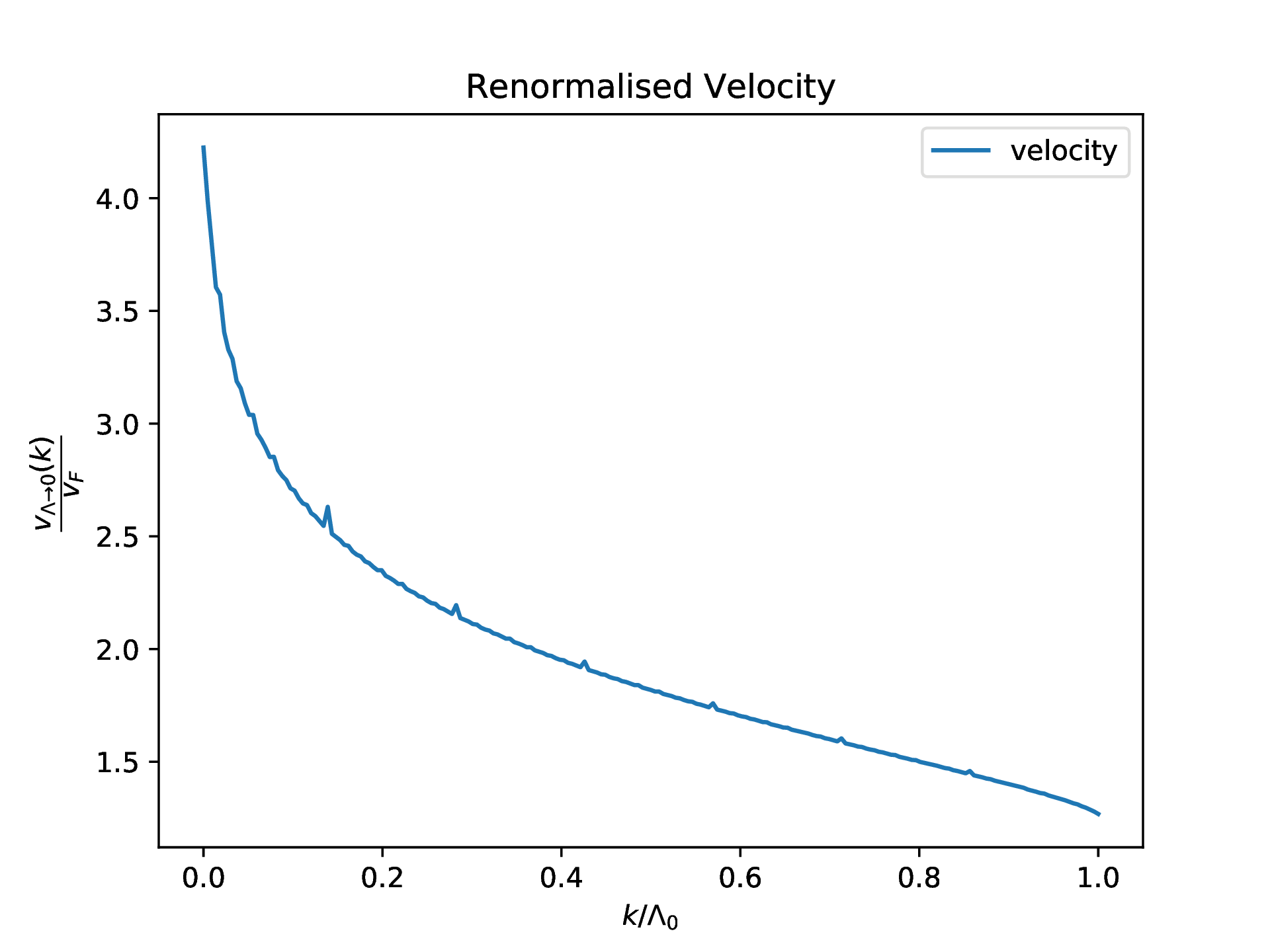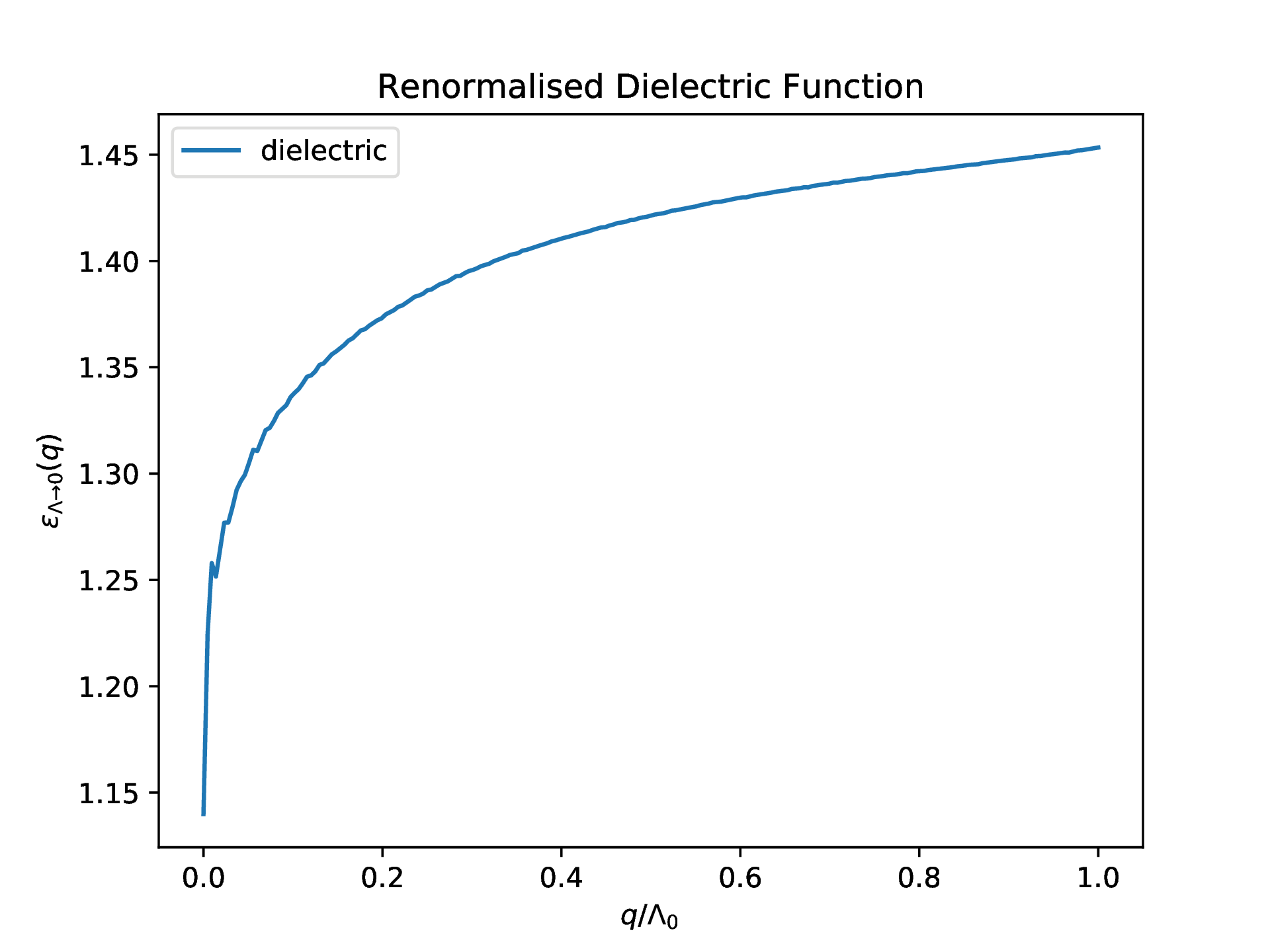Bauer
Here we will reproduce the results in the paper [1].
[1] : Carsten Bauer, Andreas Rückriegel, Anand Sharma, and Peter Kopietz. Non-perturbative renormalization group calculation of quasi-particle velocity and di-electric function of graphene. Phys. Rev. B, 92:121409, Sep 2015.
The exact FRG equations
This equation can be turned into the usual form by substitution $\phi=2\varphi$.
The Code
Method 1
Using the method described in the usage
using FRGn
## Initialisation
const m = 304 # number of cutoffs
const n = 543 # number of momenta
velocity = zeros(n,m)
dielectric = zeros(n,m)
function velocity_integrand(velocity::Array{Float64,2},dielectric::Array{Float64,2}, momentum::Float64, cutoff::Float64, phi::Float64, m::Int64, n::Int64)
## Theta function implementation with conditional
k = sqrt(cutoff^2 + momentum^2 - 2*cutoff*momentum*cos(2.0*phi))
epsilon = get_dielectric(dielectric,k,cutoff,m,n)
if k==0
return 0.0
else
return 2.2*cos(2.0*phi)*cutoff/(pi*epsilon*momentum*k)
end
end
function dielectric_integrand(velocity::Array{Float64,2},dielectric::Array{Float64,2}, momentum::Float64, cutoff::Float64, phi::Float64, m::Int64, n::Int64)
## Theta function implementation
if cos(phi)<=1 - 2*cutoff/momentum
return 0.0
else
k1 = cutoff
k2 = cutoff + cos(phi)*momentum
vel1, vel2 = get_velocity(velocity, k1, k2, cutoff, m, n)
return 4.4*momentum*sin(phi)^2/(pi*(k1*vel1 + k2*vel2)*sqrt((k1+k2)^2 - momentum^2))
end
end
## Boundary values initialisation
velocity[:,m] .= 1.0
dielectric[:,m] .= 1.0
## solving exact FRG using an user defined function from FRGn Package
rg_procedure(velocity,dielectric,velocity_integrand, dielectric_integrand ,m,n)
## Plots using user defined functions in FRGn Package
plot_velocity(velocity[:,1])
plot_dielectric(dielectric[:,1])Method 2
There is also another method available in the package where at every cutoff an interpolated function (velocity and dielectric function as function of momentum) is used. The basic idea for using this method is exactly same as earlier.
NOTE: Same
velocity_integrandanddielectric_integranddefinitions will work here too.
using FRGn
## Initialisation
m = 123
n = 456
initial_velocity(momentum) = 1.0
initial_dielectric(momentum) = 1.0
velocity, dielectric = rg_procedure(initial_velocity, initial_dielectric, velocity_integrand, dielectric_integrand, m, n)
plot_velocity(velocity)
plot_dielectric(dielectric)Both the methods internally uses the same methods but as this method uses interpolated function the result here is smoother(and more accurate) for smaller number of values of momentum (n).
Note that this method only returns the renormalised velocity and renormalised dielectric only compared to the previous method where velocity and dielectric function at all momentum and cutoffs were returned
Results
| Renormalised Velocity | Renormalised Dielectric |
|---|---|
 |  |